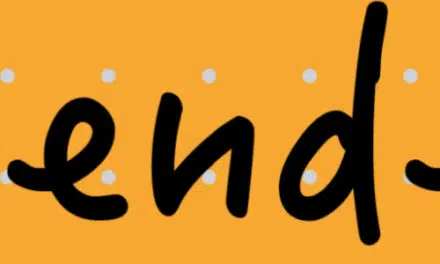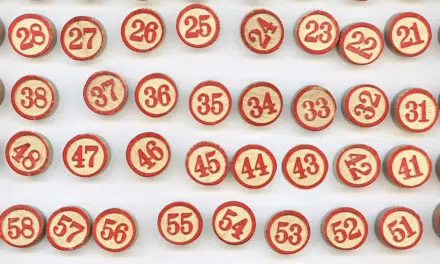In preparation of our webinar with Clive Shepherd Tuesday 9th June about ‘more than blended learning’ we have a story for you to analyze. It is the story of Nicole. Nicole is a French woman, going to work for Lebeau in Brighton (Lebeau is a fashion brand). She is sharing her experiences with her induction program. Watch the story unfold in three videos:
Why you think the induction program of Nicole was successful? What elements can you translate to your own learning programs? Please share this in the comments of this blog.






Great induction program (and annoyingly cheerful characters, these Nicole and sketchartist).
Some key elements I heard:
-Good information blend before start of f2f induction: films, articles, podcast, google hangouts for discussion with peers.
-Important not to overload with information.
-Message of the company that you don’t have to know everything at once: “The importance is where to look and who to ask”
-Network of peers and mentor during first six months of the job
-“We learn the theory before we start, so we have more time to discuss practice when we meet f2f” (flip!)
I work for a project at the University of Twente where secondary schools work together on improving their induction programs for starting teachers. The carefully thought through online platform and facilitated online learning process before the f2f is something they could take away. Nicole’s company could also take something away from our educational sector: their measures reducing the work load of starting teachers during the first two years of their profession, as well as careful evaluations of the induction phase.
Very good induction program! The company gives trainees the possibility to prepare themselves before starting on the job. The advantage there is that the trainee can prepare himself at any time. Also good guidance during the first six months; share experiences and questions with a mentor and with peers.
I work as a practice companion in the university hospital of Leiden. The current education of operating nurses follows an old fashioned way of education. To challenge the new students and use the motivation of the new student it is a good idea to use the way(s) of the induction program of Nicole.
Nice assignment! Three video’s and a clear question. Were the video’s especially made for this? Seems like it 🙂
What I find interesting is the fact that this approach provides the opportunity of a tailor made program. And the effect this has on Nicole as a new employee. Although there is a difference between Nicole and this french guy when it comes to feeling yourself a professional and having the confidence to show your work… the approach of Lebau makes Nicole feel very rewarded as a professional. She feels rewarded for the experience and ideas she has, and there is a lot of appreciation for her ideas and opinions in this approach. I really believe that it will help Lebau as an organisation to attract employees with an attitude they are looking for!
So the way of learning (interactive, rewarding, social, personal) matches (I presume) the work attitude in the company. This induction program really sets the tone for new employees!
Nice video to watch!
I think I get what Clive wants to show us. To combine online with face2face is not all you have to do to get your employees learning.
Powerfull in this businesstraining I think:
– the surrounding must be appropriate; they do all they do to feel Nicole comfortable. She feels welcome. That is off course one of the first needs…
– the telephone interview, identifying needs where necessary information and learning path (suggestion), tailor-made, have been provided.
In addition, Nicole has the choice of more or less intensively to study a subject. I think that respects the person.
– There is a mix in formal and social learning. The company facilitates any kind of learning by giving a location for groupdiscussions, platform, internetoptions etcetera.
In one line: prerequisite for learning is hospitality.
In our hospital hospitality is a paramount. For patients but also for employees. A lot of what I saw I recognize in my hospital.
But as always; we TRY to do it the best way.
In my case I try to receive my participants with hospitality. I hope at the end I have a situation that the participant can choose what, where and how much he/she learns. Even better it is when they receive a suggestion for a learning path.
Excited to be there tomorrow!
Perfect induction programme. Tailor made. That is very motivating for the participants. This induction must be a very important element of the way this company works (if it is a real case, which I doubth, other wise they had put all the particpants in one hotel) . A 5 day’s programme before you start working is exeptional as far as I know. Even in big companys where I come induction is seldom organized in such a structured way. I once desiged a 5 day programme for consultants, but when they join the programme they work most of the time 6-9 months there. During that time they have some introcution, by e-learning and on site on general stuff. In the 5 days programe the focus was on shared ways of working.
But most of the time induction is only on paper and seldom in practice! Or it is mini, coffee with the CEO in 15 minutes.
Joitskes question puzzles me a bit. What do you refer to with programme here, induction programmes, or leanring prorammes? For both I like the tailor made component, the flipp the classroom principle, the fact it is blended, the good infrastructure for Q&A,kjnow where and whom to ask, the networkof peers for interaction and the mentor.
marguerithe
The video’s show that an introduction program can be set up in different ways. There is a difference between e-learning and e-learning. A program such as Nicole had in which you know what is expected of you, where you meet your collegues and you know that you do not need to know everything the first day is different from a program with a overload of online information and a test.
I have developed a introduction program for employees at NS Stations, who work in the stores at the station. In that program we started with practical things to know you way around, then they explored other stores and the station and get to know more about the business.
Knowing your peers would have improved that program.
Nicole